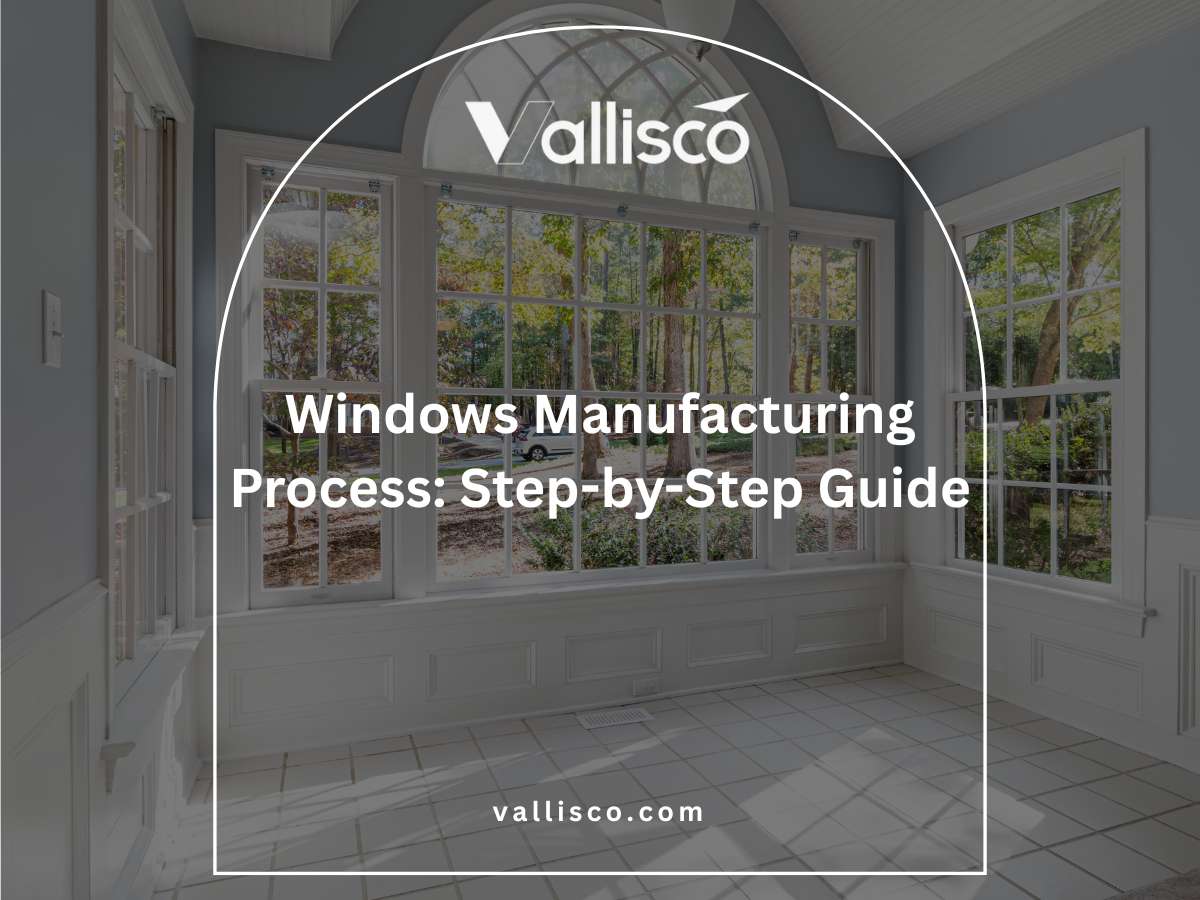I once had a hotel client call me in a panic because a guest’s room door lock failed in the middle of the night.
That experience made me realize how much a single security failure can damage a hotel’s reputation and guest trust.
Over the years, I’ve worked with property managers, hotel engineers, and suppliers. I visit properties, check how locks perform over time, compare supplier records, and review maintenance reports to make sure my lists are based on real results.
In this article, you’ll see clear, practical reviews of eight room door security options. By the end, you’ll know exactly which ones fit your business needs.
If guest safety and smooth operations matter to you, this review will save you time and costly mistakes.
So, let’s get started!
Quick Comparison Chart
Before we dive into the full breakdown, here’s a quick comparison to help you see the differences at a glance.
| Door Style | Key Features | Installation Tips | Best For | Drawbacks |
| Biometric Door | Fingerprint scan, instant access | Check fit, set height, pro install | High security, keyless | High cost, needs power |
| RFID / Key-Card Electronic Lock Door | Tap card, programmable access | Match hardware, ensure card supply | Contactless, PMS link | Card loss, cloning risk |
| Mobile‐Access (BLE or App‐Based) Lock Door | Phone unlock, app control | Check device, secure network | Modern contactless | Needs smartphone, updates |
| PIN/Keypad Lock Door | PIN codes, backlit keypad | Pick power type, durable build | Simple, no-key | Code sharing risk |
| Motion-Triggered Door Alarm | Motion detect, loud alert | Correct placement, adjust sensitivity | Intrusion deterrent | False alarms possible |
| Traditional Key Card System Door | Swipe card, low cost | Match reader, maintain unit | Budget-friendly | Card wear, data loss |
| Mechanical Deadbolt Lock Door | Steel bolt, no power | Measure size, reinforce frame | Strong security | Slow staff access |
| Door Viewer with Privacy Cover | Wide lens, privacy cover | Correct angle, smooth cover | Affordable upgrade | No lock function |
Keep that chart in mind as we move into the full breakdown. There’s more to each option than meets the eye.
1. Biometric Door
I’ve worked with hotel projects that upgraded to biometric doors and saw fewer key management issues almost overnight. These locks use fingerprint or facial recognition, which means no more lost cards or forgotten PINs. If you’re running a busy property, you know how much time that can save your staff.
Features
- Fingerprint or Facial Recognition: Guests and staff can unlock doors without carrying keys or cards, which reduces the risk of lost or stolen access.
- Customizable Access Control: You can grant or remove access for specific people instantly, making it simple to handle guest changes or staff scheduling.
- Built-in Activity Logs: The system records every entry with time and user data, making it easy to track staff movements and verify guest complaints. These logs can be valuable in case of disputes or investigations.
- Multi-user Storage: Stores multiple fingerprints so different guests or staff can use the same room without reprogramming the lock. This is especially useful for shared staff areas or group bookings.
- Weather and Tamper Resistance: Built with strong housing to handle heavy use and protect sensitive parts from damage. It also reduces the chance of the lock failing due to weather or forced entry attempts.
Installation Tips
- Check Door Compatibility: Select a model that works with your existing door type and locking mechanism. This avoids costly modifications during installation.
- Position for Easy Access: Install the scanner at a height that’s comfortable for all guests and staff. Good positioning improves usability and reduces wear on the unit.
- Hire Experienced Technicians: Work with installers who know hotel biometric systems well. Their experience helps avoid setup errors and ensures the lock performs as intended.
Final Thoughts
Biometric Door is best if you’re looking for quick, keyless access with strong control over who enters each room. But it can be expensive upfront and needs reliable power or backup to prevent lockouts.
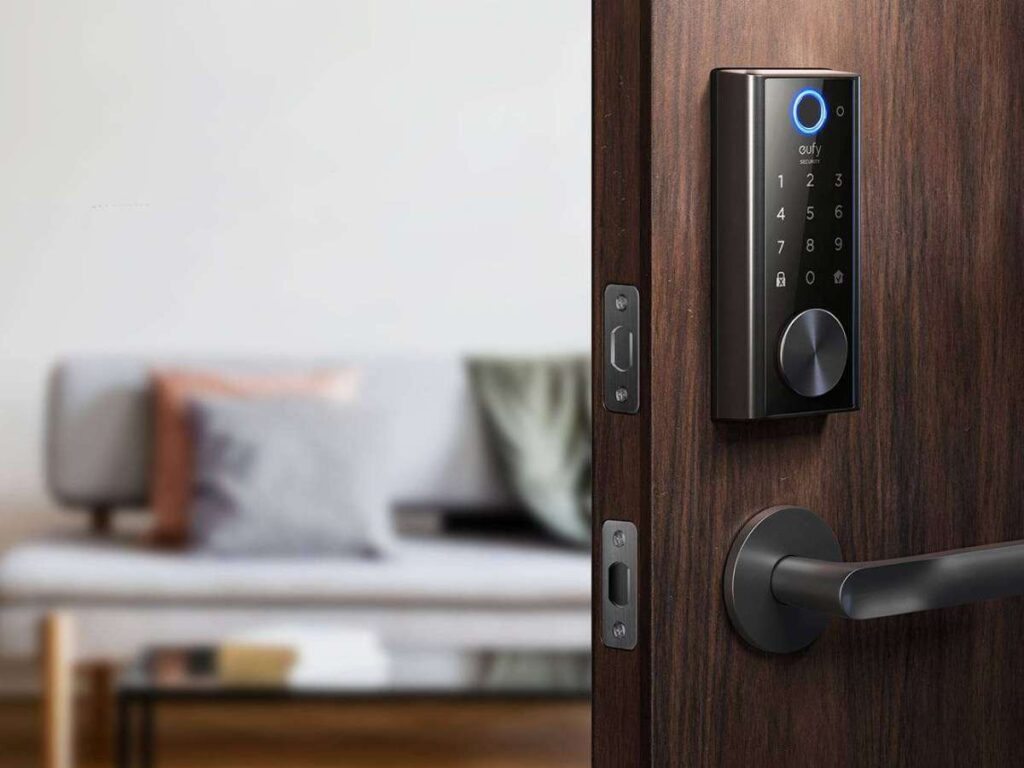
2. RFID / Key‑Card Electronic Lock Door
Many hotels choose RFID locks because they’re simple for guests and easy for staff to manage. I’ve seen them replace outdated key systems without major disruptions, which keeps daily operations running smoothly.
Features
- Contactless Operation: Guests only need to hold the card near the reader to unlock the door. This speeds up entry and reduces wear compared to inserting a card.
- Programmable Access Levels: You can assign different access rights for guests, housekeeping, or maintenance. I’ve found this especially useful for limiting access to certain floors or areas.
- Quick Card Replacement: Lost or damaged cards can be deactivated and replaced instantly, which keeps security intact without rekeying the door.
- Audit Trail Capability: Some models record card usage, giving you a history of when and where each card was used. This helps in resolving disputes or tracking staff activity.
- Integration with PMS (Property Management System): Cards can be programmed during check-in, linking room access directly with guest reservations. This saves time for front desk teams.
Installation Tips
- Match with Existing Door Hardware: Choose a lock that works with your current handles and strike plates to reduce installation costs.
- Check for Card Compatibility: Confirm that the system uses cards that are affordable and easy to replace in bulk. This prevents future supply issues.
- Plan for Network Integration: If you want PMS integration, make sure the lock system is compatible with your existing software before purchase.
Final Thoughts
RFID / Key-Card Electronic Lock Door is best if you want fast, contactless access that works well with hotel management systems. But it depends on card availability and can be vulnerable if cards are shared or cloned.
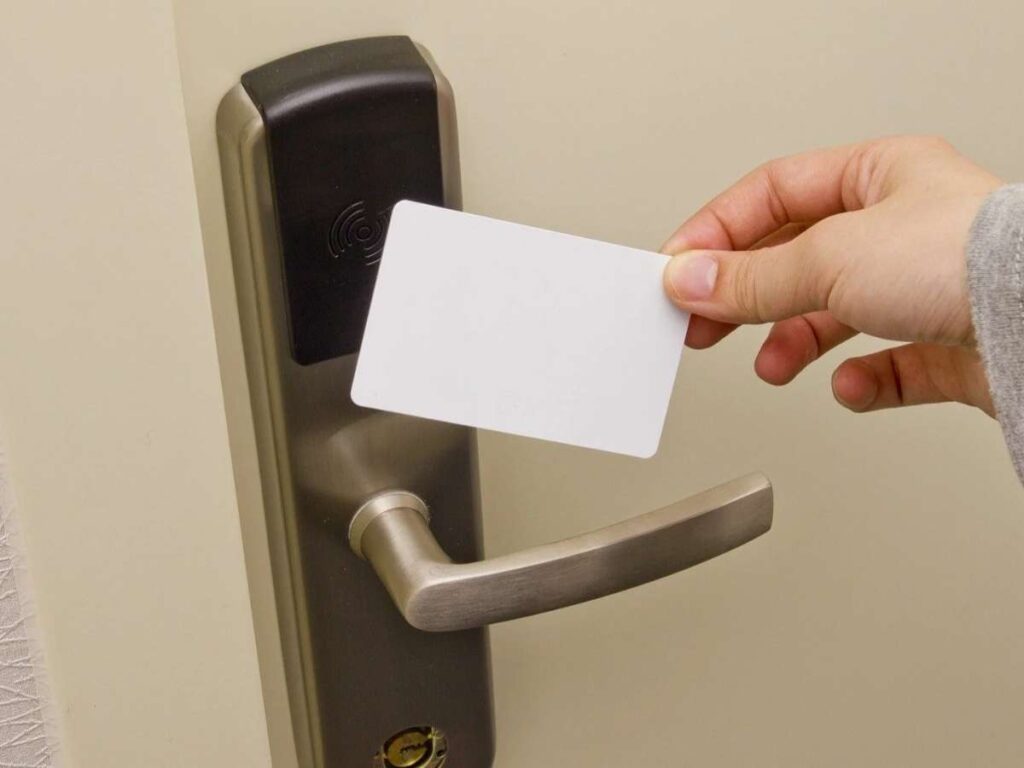
3. Mobile‐Access (BLE or App‐Based) Lock Door
Mobile-access locks are becoming popular with hotels that want to give guests a fully contactless check-in. I once helped a property set these up, and they immediately noticed fewer front desk lines during peak hours.
Features
- Bluetooth Low Energy (BLE) Connectivity: Allows guests to unlock doors by holding their phone near the lock, without needing internet. This reduces delays caused by poor Wi-Fi signals.
- App-Based Control: Access is managed through a hotel-branded or third-party app, giving guests and staff a smooth user experience. I’ve noticed this also allows for easy push notifications and in-app instructions.
- Remote Access Management: Managers can grant or revoke access from anywhere, which is useful if a guest extends their stay or changes rooms.
- Digital Key Sharing: Guests can share a temporary key with a traveling companion without needing extra hardware. This is especially helpful for families or group bookings.
- Usage Analytics: Some systems track usage patterns, helping management see peak entry times and adjust staffing or security accordingly.
Installation Tips
- Confirm Smartphone Compatibility: Make sure the system supports both iOS and Android devices to avoid guest complaints.
- Secure Your Network: Protect the lock’s backend system with strong encryption and regular security updates.
- Test Signal Range: Check BLE signal performance in different parts of your property before finalizing installation.
Final Thoughts
Mobile‐Access (BLE or App‐Based) Lock Door is great pick if you’re looking to offer guests a modern, fully contactless experience while reducing front desk workload. But it relies on guests having compatible smartphones and can require ongoing software updates to stay secure.
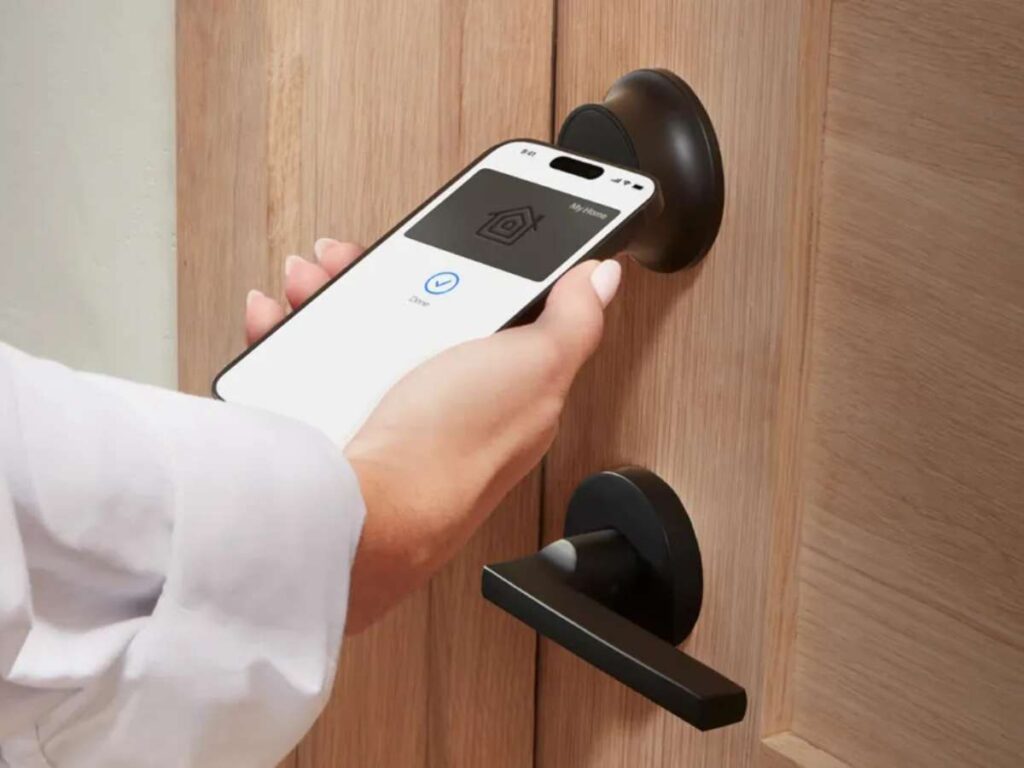
4. PIN/Keypad Lock Door
PIN or keypad locks are a straightforward option for hotels that want easy access without relying on cards or phones. I’ve installed these in smaller properties where keeping things simple was the top priority.
Features
- Customizable PIN Codes: Assign unique codes for guests, staff, or contractors. This makes it easy to track access and update codes as needed.
- No Physical Key Required: Guests can enter with just a code, avoiding issues with lost keys or cards. This reduce replacement costs significantly over time.
- Temporary Access Codes: Create short-term codes for deliveries, maintenance, or event staff without giving permanent access.
- Backlit Keypad: Illuminated buttons help guests enter codes easily at night or in low-light conditions.
- Weather-Resistant Design: Many models are built to handle moisture and temperature changes, making them suitable for both indoor and outdoor use.
Installation Tips
- Check Power Source: Decide whether you want battery-operated or hardwired units, based on maintenance capabilities.
- Plan Code Management: Have a system in place to reset and track codes to maintain security.
- Choose Durable Materials: Opt for keypads with strong casings to withstand frequent use and reduce wear.
Final Thoughts
PIN/Keypad Lock Door is best if you want a simple, no-key solution that’s easy for guests and staff to use. But it can be less secure if codes aren’t changed regularly or are shared too widely.
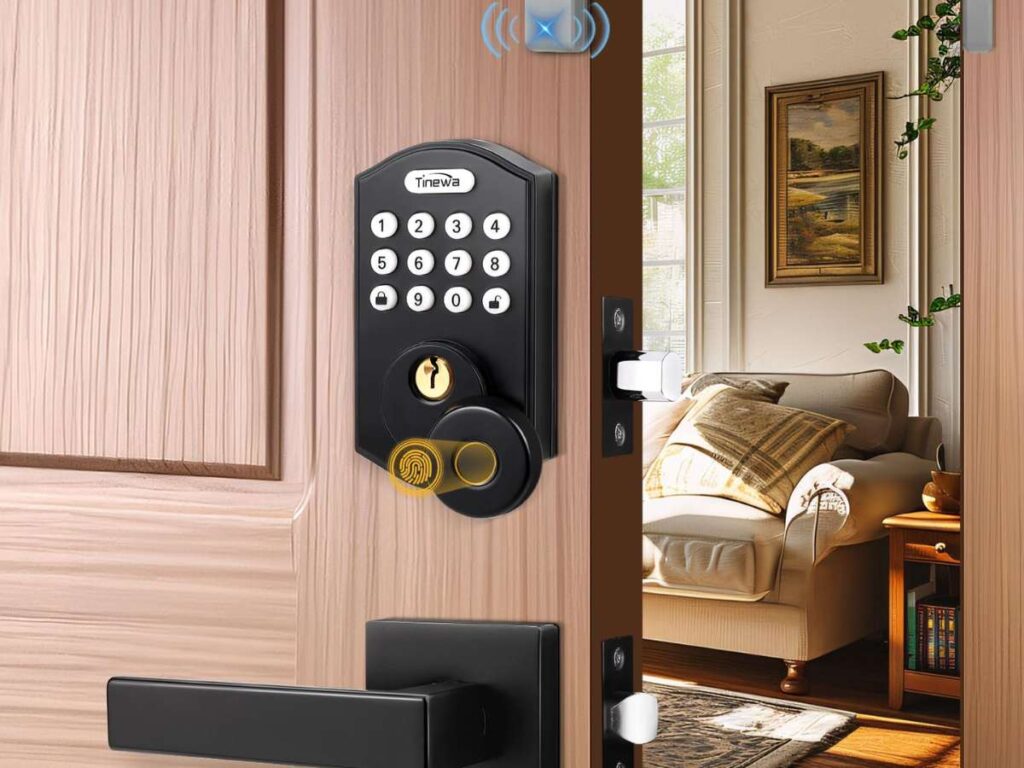
5. Motion-Triggered Door Alarm
Motion-triggered door alarms can add an extra layer of security for both guest rooms and restricted hotel areas. I like how this system gives you an immediate warning before someone even tries to open the door.
Features
- Automatic Motion Detection: Senses movement near the door and triggers an alarm instantly. This helps deter intruders before they even attempt entry.
- Adjustable Sensitivity Levels: You can set how sensitive the sensor is, reducing false alarms in high-traffic areas. I’ve found this especially useful in lobbies where people pass by often.
- Audible and Visual Alerts: Many models offer both loud alarms and flashing lights, making them hard to ignore.
- Battery Backup: Keeps the alarm running during power outages, ensuring continuous protection.
- Integration with Security Systems: Can connect to your hotel’s central security panel for faster response times from staff.
Installation Tips
- Position Sensors Correctly: Place them where they can detect motion without being triggered by unrelated activity.
- Test Different Sensitivity Settings: Adjust until you find the right balance between security and avoiding unnecessary alarms.
- Secure Wiring or Mounts: Ensure the unit is firmly attached or hidden wiring is properly installed to prevent tampering.
Final Thoughts
Motion-Triggered Door Alarm is solid choice if you want a visible deterrent that alerts staff quickly to potential intrusions. But it may cause disruptions if sensitivity isn’t set correctly or if placed in busy areas.
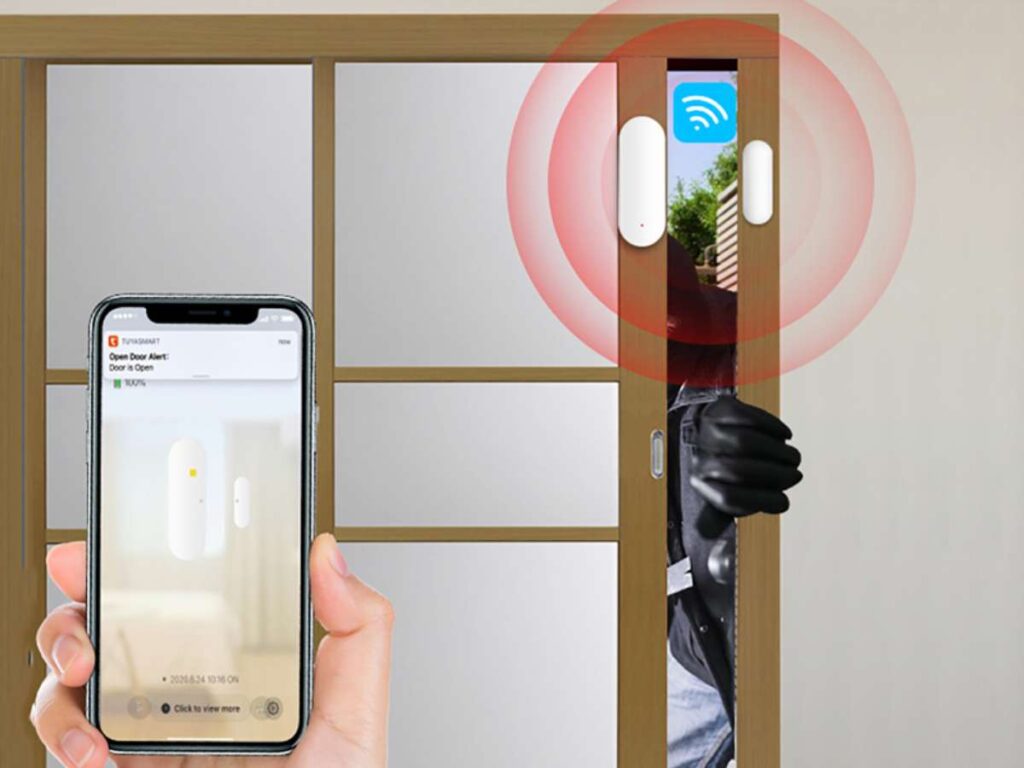
6. Traditional Key Card System Door
Traditional key card systems have been a staple in hotels for decades because they’re reliable and cost-effective. I still see many properties stick with them since they’re easy for guests to understand and quick for staff to manage.
Features
- Magnetic Stripe Access: Guests swipe the card through a reader to unlock the door. This technology is widely used and simple to operate.
- Low Replacement Cost: Cards are inexpensive to replace, which keeps expenses down for hotels with frequent guest turnover. I’ve noticed this is a big advantage for budget and mid-range properties.
- Basic Programming Needs: Most systems can be programmed on-site without needing an internet connection, making them ideal for areas with limited connectivity.
- Clear Physical Feedback: Guests can feel and hear the latch release, giving them immediate confirmation the door is unlocked.
- Minimal Training Required: Staff can quickly learn to issue and deactivate cards, keeping onboarding time short.
Installation Tips
- Verify Card Reader Compatibility: Make sure new readers match your current key card encoding equipment.
- Plan for Regular Maintenance: Card readers may need periodic cleaning to prevent read errors.
- Secure Programming Stations: Keep equipment used to program cards in a locked area to avoid unauthorized access.
Final Thoughts
Traditional Key Card System Door is best if you want a proven, low-cost option that’s simple for guests and staff to use. But it’s more prone to wear and demagnetization compared to newer contactless systems.
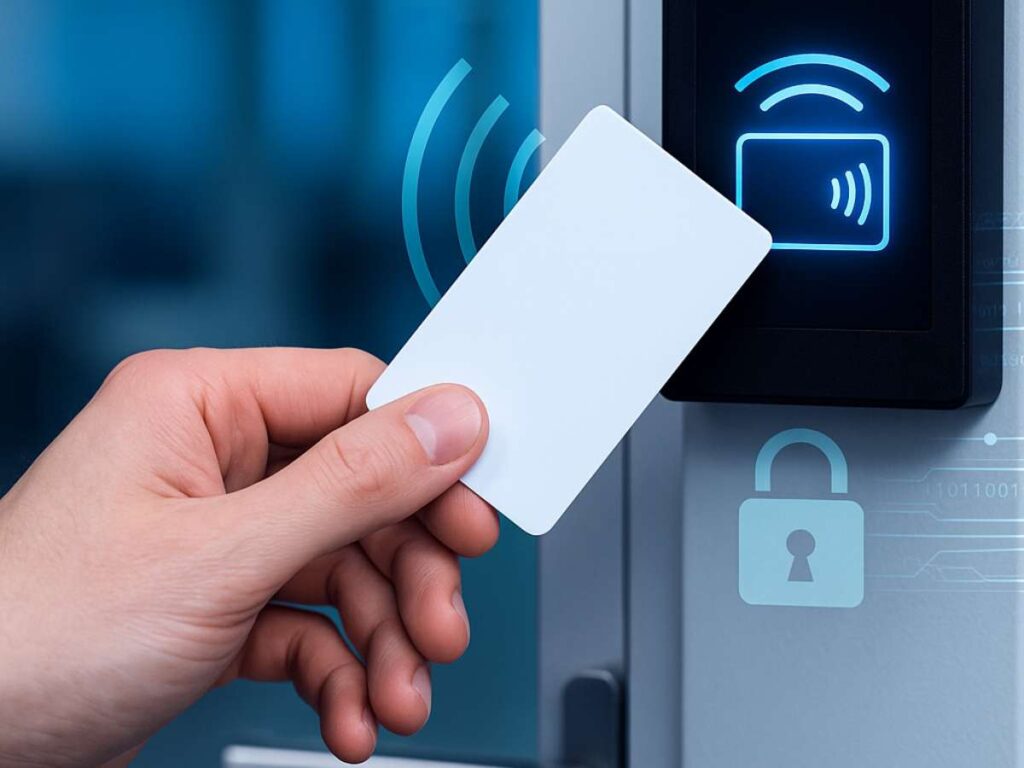
7. Mechanical Deadbolt Lock Door
Mechanical deadbolts remain one of the simplest and most secure options for room doors. What impressed me most is how they create a solid, visible barrier that instantly signals safety to guests.
Features
- Solid Steel Bolt: Extends deep into the door frame for strong resistance against forced entry. I’ve seen this give hotel owners peace of mind in high-risk areas.
- No Power Needed: Operates purely mechanically, making it reliable even during power outages or system failures. If you need this type of door, I suggest purchasing from a reputable supplier like Vallisco, which can provide durable, well-built units that meet hotel security standards.
- Durable Construction: Built to withstand years of heavy use without major wear, making it a long-term investment.
- Manual Operation: Guests physically turn a key or thumb-turn, giving them a sense of control over their room security.
- Tamper-Resistant Design: Many models include reinforced strike plates and anti-pick pins for added protection.
Installation Tips
- Measure Door Thickness: Ensure the deadbolt fits your door size before purchase to avoid installation problems.
- Reinforce the Frame: Use longer screws and metal plates in the frame to improve security.
- Check Local Fire Codes: Confirm that adding a manual deadbolt complies with safety regulations in your area.
Final Thoughts
Mechanical Deadbolt Lock Door is best if you want a cost-effective, power-free option with strong physical security. But it can be slower for staff access in emergencies compared to electronic systems.
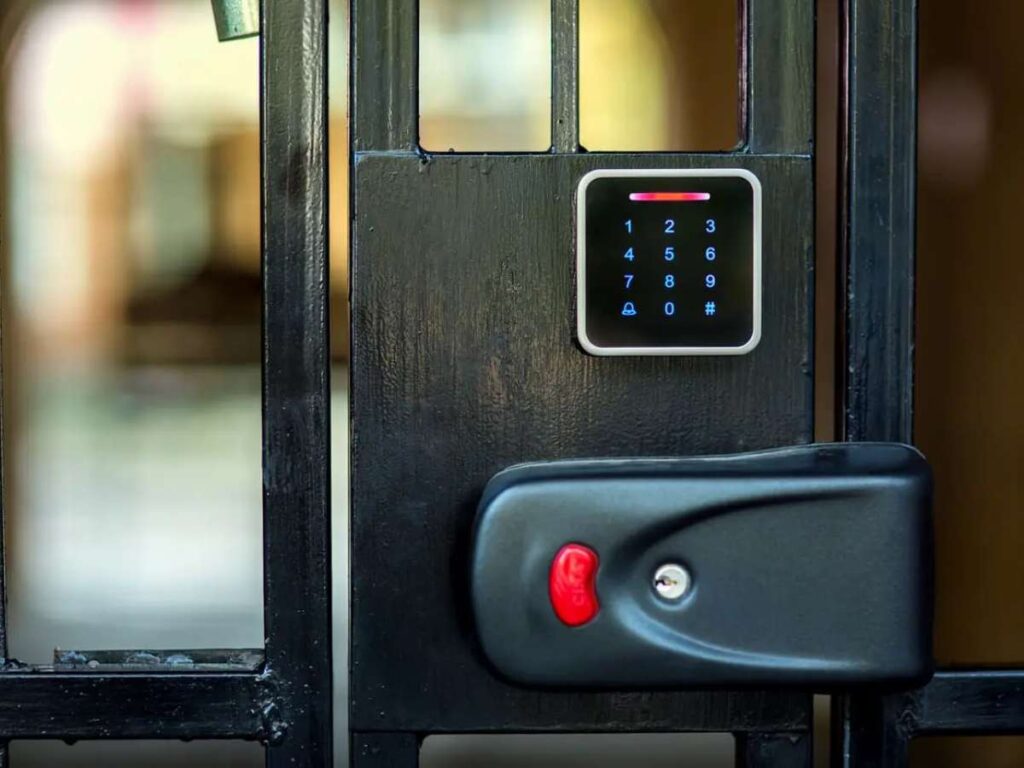
8. Door Viewer with Privacy Cover (Peephole)
A door viewer with a privacy cover is a low-cost way to improve guest security. I’ve recommended them to hotels that wanted a quick upgrade without investing in complex systems.
Features
- Wide-Angle Lens: Offers a broad view of the hallway so guests can see who is outside before opening the door. This added visibility makes guests feel more secure.
- Privacy Cover: Slides over the lens to block outsiders from peeking in through reverse-viewing methods. I know that this simple feature make a big difference in guest confidence.
- Easy to Operate: Guests only need to lift the cover and look through, requiring no training or technical skills. This is useful for properties with a wide age range of visitors.
- Durable Housing: Made from metal or heavy-duty plastic to resist damage and tampering. Strong materials keep the viewer functional for years.
- Low Maintenance: Requires minimal upkeep aside from occasional cleaning. This keeps costs low while still providing a safety benefit.
Installation Tips
- Choose Correct Viewing Angle: Select a lens angle suitable for the door’s height and hallway width to maximize visibility.
- Drill with Care: Use the right-sized drill bit to avoid damaging the door or weakening its structure.
- Secure the Cover: Make sure the privacy cover is firmly attached and slides smoothly to encourage guests to use it.
Final Thoughts
Door Viewer with Privacy Cover is a solid pick if you want a simple, affordable upgrade that boosts guest confidence. But it offers limited security compared to locks or alarms since it’s only a viewing tool.
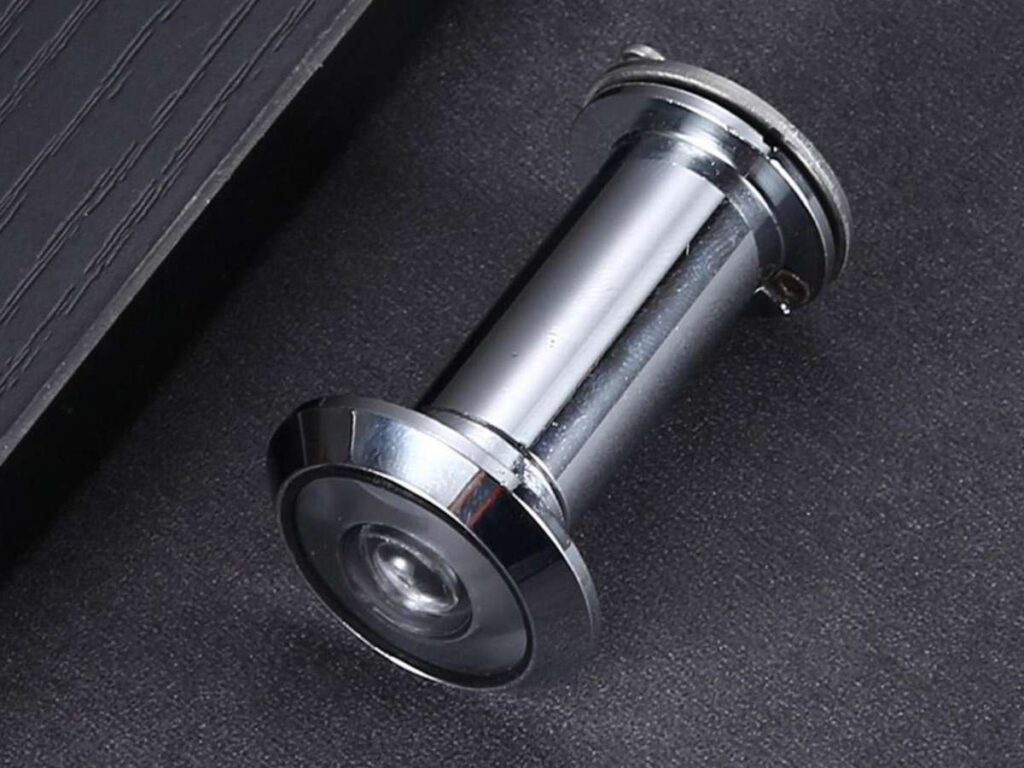
3 Factors To Consider When Choosing The Right Room Door Security For Hotel
Choosing the right room door security is not just about picking the most advanced option on the market. I’ve seen hotels spend on features they barely use, while overlooking basic needs like durability and maintenance.
The goal is to find a balance between guest safety, operational efficiency, and cost without creating headaches for your staff.
Security Level and Guest Safety
The first thing you should think about is how well the system protects your guests. This goes beyond just locking the door. It is about controlling access, deterring tampering, and giving guests peace of mind.
Look for features like strong construction, tamper resistance, and clear visual or audible feedback when the lock engages. Vallisco manufacture doors based on your specific security requirements, whether you need biometric access, RFID compatibility, or reinforced mechanical systems. Their production capabilities allow you to match the right security features with the style, size, and durability your property demands.
Integration and Staff Management
The first thing to think about is how well the system protects guests. This is more than locking the door. It involves controlling access, discouraging tampering, and making guests feel secure.
Look for strong construction, tamper resistance, and clear visual or audible confirmation when the lock engages. For properties that host VIP guests or high-profile events, advanced systems like biometrics or multi-layer access control may be worth the investment.
Cost, Maintenance, and Longevity
Price is always a factor, but the cheapest option upfront is not always the best investment. A low-cost lock that needs constant repairs will cost more in the long run.
Consider both the purchase price and ongoing costs like replacement parts, software updates, or battery changes. I recommend choosing systems that have local service support and available spare parts. That way, you are not waiting weeks for a repair when a lock fails during peak season
Conclusion
That late-night call from a hotel client taught me the cost of poor room security.
In this article, we covered eight proven options, from biometric doors to simple deadbolts, each chosen to match real hotel needs.
Your choice should fit your guests, your staff, and your budget.
If you are ready to upgrade or customize your door security, Vallisco can manufacture to your exact requirements.
Contact us today for high-quality manufacturing!
Discover More Options
For more helpful content, explore our collection of recommended reads:
Still haven’t found what you’re looking for? Don’t hesitate to contact us. We’re available around the clock to assist you.



